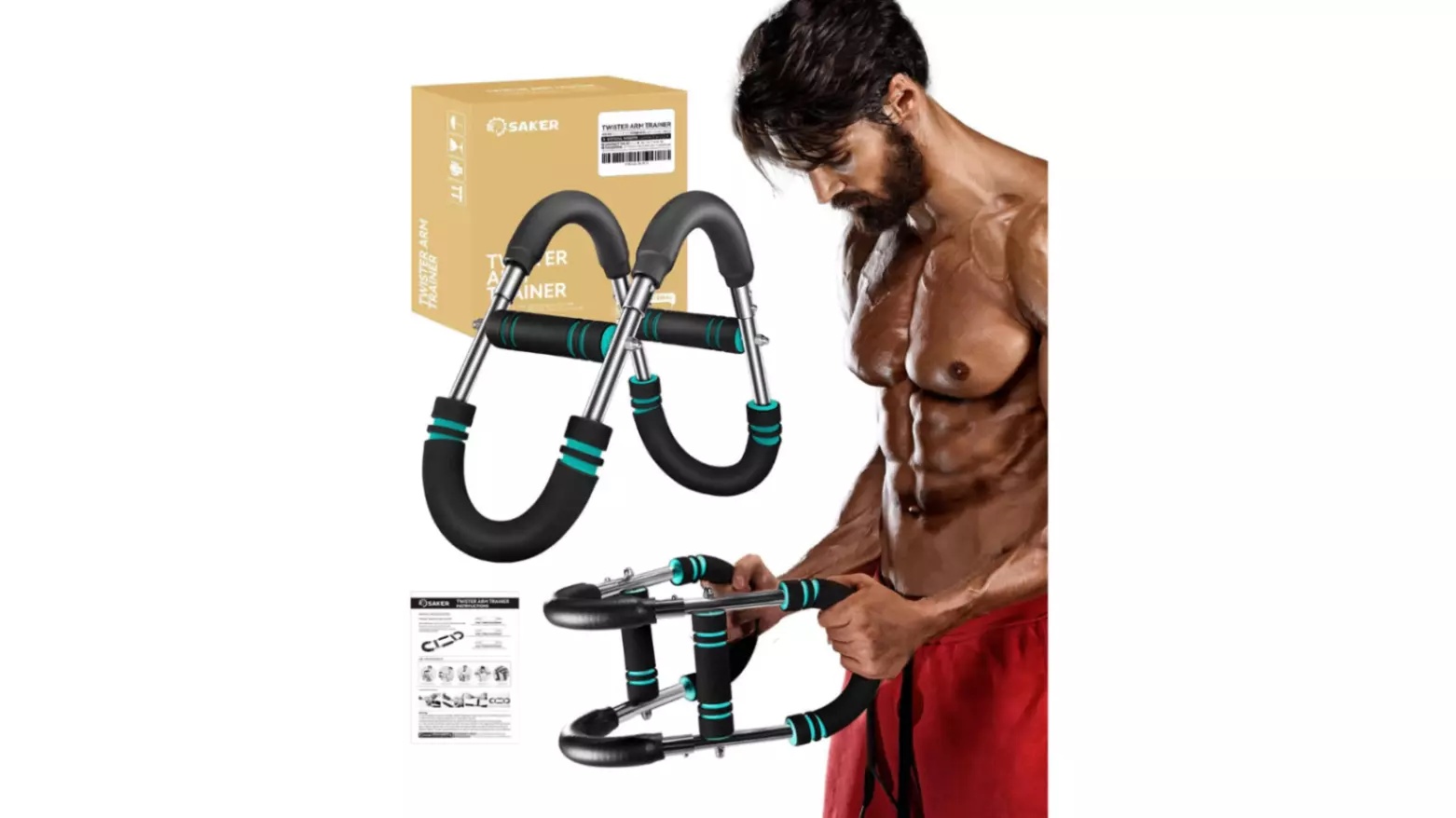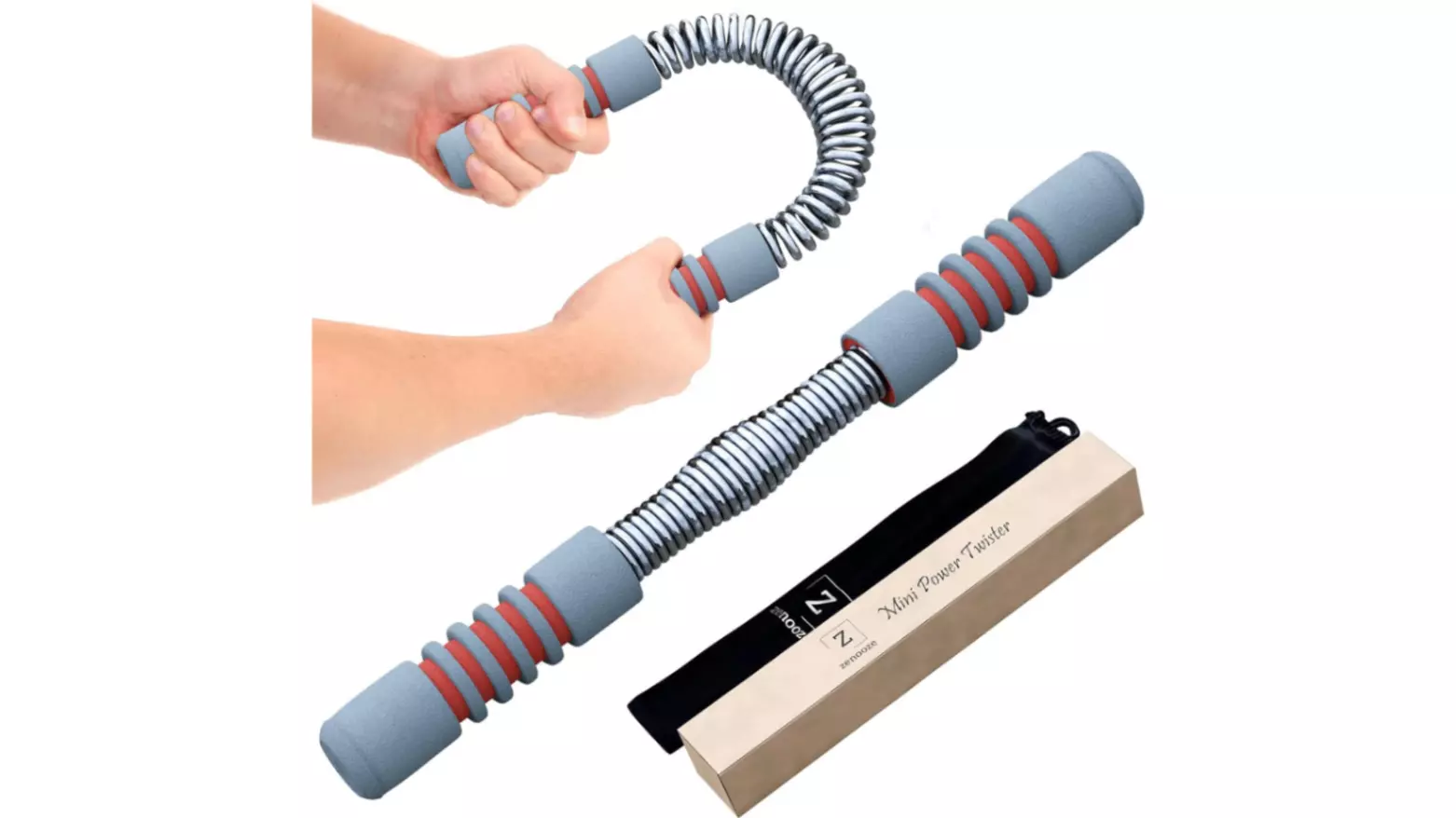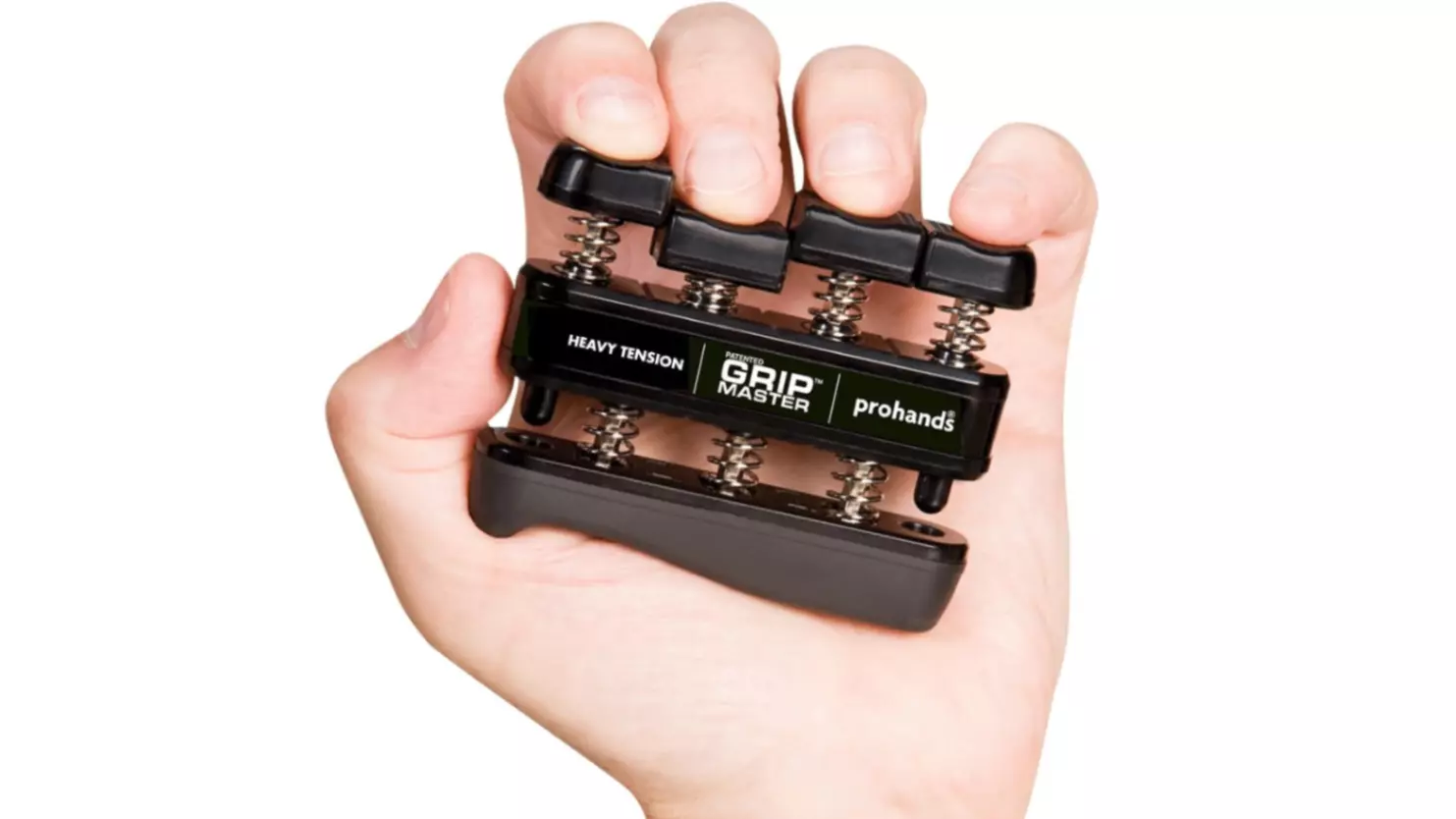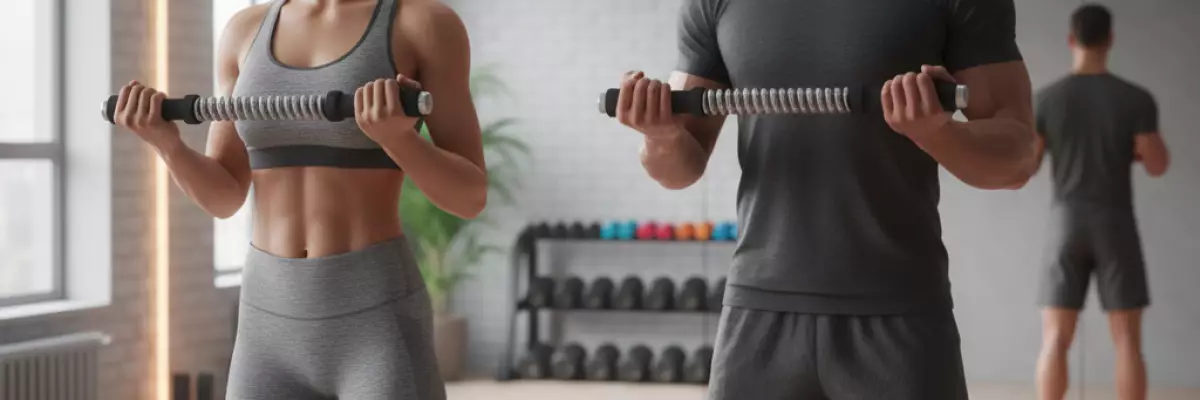If you're looking for one simple, portable device to build a powerful chest, strong arms, and broad shoulders, you've probably seen the Twister Arm Trainer trending. For many, the biggest challenge in a home gym is finding space for bulky equipment. We want results, but we don't have room for a full bench press and dumbbell rack.
This is where the twister arm trainer comes in. It's a single, compact tool designed for one purpose: building serious upper-body strength. You might know it by other names, like the power twister, twisty bar, or twist bar.
This guide is your one-stop-shop. We will cover everything you need to know: what it is, the key benefits, a full workout routine, and our picks for the best models available today.
Table Of Contents In This Guide, You'll Find:
- The Best Twister Arm Trainers (Our Top Picks)
- What About "Saker Twister Arm Trainer Exercises"?
- What Exactly is a Twister Arm Trainer?
- Top 5 Benefits of the Power Twister Bar
- The Complete Power Twister Workout Routine
- Sample "Power Twister Workout Chart" (Printable)
- Conclusion: Is the "Twisty Bar" Right for Your Home Gym?
- Frequently Asked Questions (FAQ)
The Best Twister Arm Trainers (Our Top Picks)
We got our hands on the most popular models to test for safety, durability, and effectiveness. Here are our top picks for building upper-body strength at home.
1. Editor's Choice: Saker Twister Arm Trainer

Why it wins: Our top pick is, without a doubt, the Saker Twister Arm Trainer. This saker twister arm trainer review is simple: it fixes every problem of the old spring bars. It utilizes a fully-enclosed hydraulic piston, so it’s silent, smooth and–most importantly–won’t snap back and bonk you.
Its "micro-adjustable" resistance, from 22lbs to 440lbs, is a game-changer. A beginner and a pro bodybuilder can both get an intense workout from the exact same device.
- Pros: Safest option (no spring rebound), fully adjustable (22-440lbs), extremely durable, smooth and quiet operation.
- Cons: Higher price point than basic models.
Check out & learn more about top picked Saker Twister Arm Trainer
2. Best Budget Pick: IronGrip Spring Power Twister

Why it's a good alternative: If you just want a simple twisty bar for a low price, the IronGrip Spring Power Twister Bar is a classic. It’s a no-frills steel spring with wrist straps for safety. It’s not adjustable, so you have to buy the resistance level you want (e.g., 40kg, 60kg), but it absolutely gets the job done.
- Pros: Very affordable, simple design, effective for building raw strength.
- Cons: Fixed resistance (you must buy a new one to level up), higher risk of spring rebound, can be squeaky.
See details and take a look on this classic budget pick Spring Power Twister
3. Best for Forearms: GripMaster Wrist Twister

Why it's different: If your primary goal is building massive forearms and a crushing grip, this specialized wrist twister is your best bet. It’s not a compound exercise for your chest, but it isolates and builds your wrist flexors and extensors. It usually consists of rolling a weight up and down on a rope.
- Pros: Excellent for isolating and building forearm/grip strength.
- Cons: Not a compound exerciser; only works the lower arms.
Find and get more details about this Wrist Twister
What About "Saker Twister Arm Trainer Exercises"?
We get this question a lot. What are the best saker twister arm trainer exercises?
The answer is simple: all the exercises in our Complete Power Twister Workout Routine section above are perfect for the Saker. The main benefit is that you can adjust the resistance for each specific exercise. For example, you might use 50lbs of resistance for the Overhead Press but 150lbs for the Classic Chest Press. This is way more safe and effective for developing balanced strength.
What Exactly is a Twister Arm Trainer?

At its core, the twister arm trainer is a simple piece of twister gym equipment designed for resistance training. It's typically a bar (about 2-3 feet long) with handles on both ends and a high-resistance mechanism in the center.
It functions as a powerful twister arm exerciser by providing constant resistance as you bend it inward or outward. It’s the resistance you apply in bending the bar that activates muscle growth in your chest, shoulders, back, and arms.
There are two main types you'll see:
- Spring Power Twister: This is the "old-school" model. It uses a heavy-duty, coiled spring in the center. It works but frequently has a constant resistance, and can be a bit wild if it snaps back."
- Hydraulic Power Twister: This is the modern, safer, and more versatile version. Instead of a spring, it uses a hydraulic piston (like you'd find in an office chair or car shock absorber). This provides smoother, more consistent resistance and, most importantly, is fully adjustable.
Top 5 Benefits of the Power Twister Bar

Looking for the main power twister bar benefits? Here’s why this tool deserves a spot in your home gym.
1. Build Explosive Chest & Arm Strength
This is its primary function. The inward bending motion is a powerful adduction exercise, directly targeting your pectoral muscles (chest) in a way that’s difficult to replicate without weights. It also heavily engages your biceps, triceps, and deltoids (shoulders).
2. Enhance Shoulder and Back Stability
It's not just a chest builder. Controlling the resistance of the twisty bar forces your entire shoulder girdle and upper back (lats and traps) to engage as stabilizers. This builds a strong, stable foundation for all your other upper-body movements.
3. Improve Grip and Wrist Strength
To even hold the device during a rep, you're engaging your forearms and hands. This constant tension makes it an excellent wrist twister and grip enhancer. A lot of users claim their grip is notably stronger after only a few weeks.
4. The Ultimate Portable "Chest Workout Equipment"
This is perhaps its biggest selling point. Forget bulky benches. The power twister is the ultimate portable chest workout equipment. It’s small enough to slide under a bed, put in a closet, or even take with you to the office or on vacation. You can get a killer chest workout anywhere.
5. Adjustable and Scalable
The biggest flaw of old spring bars was their fixed resistance. Once you got too strong, you had to buy a new, stronger bar. Modern hydraulic models (like the Saker, which we'll review below) are fully adjustable. You can set the resistance as low as 22lbs for beginners or high-rep warm-ups, and crank it up to 440lbs for advanced users. It grows with you.
The Complete Power Twister Workout Routine

Ready to get started? This simple power twister bar workout is perfect for building foundational strength. We've included the best twisting exercises to hit your entire upper body.
Safety First: Always maintain a firm grip on the handles. Control the movement through the entire range of motion—don't let the bar snap back violently. Start with a resistance level you can comfortably control.
Warm-up
Before you begin, warm up your shoulders, chest, and arms with 5 minutes of light cardio (like jumping jacks) and dynamic stretches (like arm circles).
Exercise 1: The Classic Chest Press (Inward Bend)
Hold the twister arm trainer straight out in front of you at chest level, with your palms facing down. Grip the handles firmly. Slowly bend the bar inwards, squeezing your chest muscles at the peak of the contraction. Hold for a second, then slowly and with control return to the starting position.
Exercise 2: The Reverse Grip Bicep Curl
Hold one handle of the twister securely against your upper thigh or hip. Grip the other handle with an underhand (palm up) grip. Keeping your elbow tucked in, curl the handle down towards your leg, squeezing your bicep. Control the movement as you return to the start.
Exercise 3: Overhead Shoulder Press
Grip the twister with palms facing inward (neutral grip) and hold it overhead. Keeping your core tight, slowly bend the bar downwards in front of your head. Concentrate on contracting your shoulder and upper chest muscles. Slowly return to the starting position.
Exercise 4: Behind-the-Back Pull
Hold the bar behind your back, with your palms facing away from you. This is a shorter range of motion. Squeeze your hands inwards, focusing on your rear deltoids (back of the shoulders) and upper back. This is an excellent exercise for posture.
Sample "Power Twister Workout Chart" (Printable)
Here is a simple power twister workout chart you can follow 3 days a week (e.g., Monday, Wednesday, Friday) to allow for proper recovery.
| Exercise | Sets | Reps | Rest Time |
| Chest Press | 3 | 10-15 | 60 sec |
| Bicep Curl | 3 | 10-15 | 60 sec |
| Overhead Press | 3 | 10-15 | 60 sec |
| Behind-the-Back Pull | 3 | 10-15 | 60 sec |
Conclusion: Is the "Twisty Bar" Right for Your Home Gym?
The twister arm trainer is not a gimmick. It’s an insanely efficient multipurpose instrument for developing upper body musculature, especially in your chest, arms and shoulders.
Who is it for?
- People with home gyms and limited space.
- Anyone who travels frequently and wants to maintain their strength.
- Beginners looking for a safe way to start resistance training.
- Advanced lifters who want to add a new "finisher" to their upper body days.
Ready to build serious upper-body strength? Check out our top pick, the Saker Twister Arm Trainer, GripMaster Wrist Twister or a budget-friendly Spring Power Twister to try it out.
Frequently Asked Questions (FAQ)
What muscles does the twister arm trainer work?
The twister arm trainer primarily works your chest (pectorals), arms (biceps and triceps), shoulders (deltoids), and your grip/forearm muscles. Your upper back (lats and traps) and core are also engaged as stabilizers.
Is the power twister better than pushups?
It's not "better," it's "different," and they complement each other perfectly. Pushups are a fantastic bodyweight exercise (a "pushing" motion). The power twister provides resistance through adduction (squeezing inwards), which targets the chest muscles in a unique way. Use both in your routine!
How often should I use the twister arm exerciser?
Like any strength training, your muscles need time to recover. Start with 2-3 times per week on non-consecutive days (e.g., Mon/Wed/Fri). And listen to your body, making modifications as you build strength.






Comments (0)
Please log in to leave a comment.
No comments yet. Be the first to comment!